In any city we arrive in, the first thing we do is research how to use the public transport system. Arriving in Istanbul was no different. The first thing we had to do on arrival was get from the airport into the city centre, and then from there to our hotel. If you’re a budget traveller like us, you know that Ubers and taxis are a last resort. We’d much rather make use of the public transport. The public transport in Istanbul is also very handy, as the traffic in the city can be very heavy.
Finding information isn’t always easy, though, especially for Istanbul. Finding out what information was accurate was a challenge. We kept finding posts that were so old that the information was no longer relevant. That’s why we’ve taken everything we learnt about public transport in Istanbul to write this post. From the coach-style buses to and from the airport, to the trams, metros and ferries around the city, we’ve got everything you need to know about the Istanbul public transport system.
In this post:
- Modes of Transport
- Paying the Fare (IstanbulKart)
- Cost of Transport
- Finding Timetables and Routes
- Important Things to Know
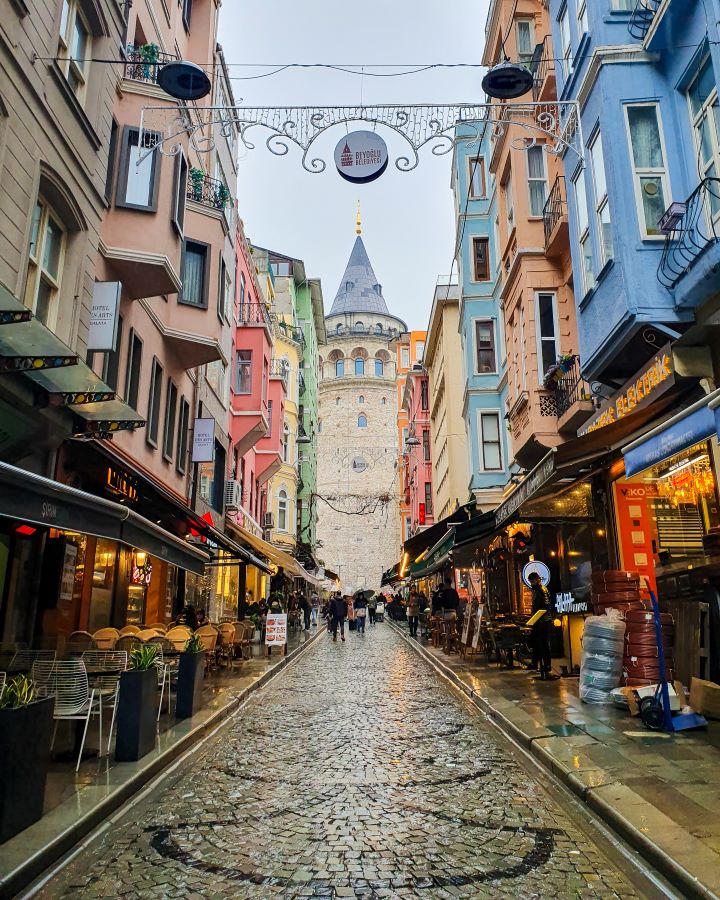
Modes of Public Transport in Istanbul
In Istanbul, you’ll find a variety of public transport options. There are trams, buses, and metros, as well as ferries, funiculars, and coach-style buses that travel to and from the airport. Let’s go through each of the modes of public transport in Istanbul:
Tram
This will probably be the form of transport you use the most while in Istanbul. Especially for those of you staying in Sultanahmet (which we would definitely recommend!), as buses do not service this area. Trams continue running until about midnight.
Istanbul has two separate tram systems, known as the modern and the heritage. The modern tram consists of four lines, all on the European side (T1, T4, T5, and T6). The heritage has two lines, T2 on the European side in Kabataş, and T3 on the Asian side in Kadıköy.
Trams have existed in Istanbul since the mid 1800’s, but all lines were completely closed by 1966. Due to traffic congestion, the tram system was brought back, with the first section opening again in 1992. It is quite extensive around the tourist areas, though, so you should be able to get to most places you want to go using the modern tram. While we were in Istanbul, the only tram line we needed to use was the T1. This travels from the suburbs to the west, through Sultanahmet and up to Kabataş.
Metro
The Metro in Istanbul consists of 11 lines that travel all over the city, running from around 6:00am until midnight. They’re mostly on the European side, with only one line crossing the Bosphorous, and three lines on the Asian side. The metro first opened in 1989, only a few years before the tram.
The metro is useful for when you need to get a bit further out of the city, or if you’re heading across the Bosphorus Strait but don’t want to take a ferry. You can also use the metro to get to the city from Istanbul airport on the M11. However you will have to swap at least once to actually reach the city, so it isn’t the most efficient route.
We only used the metro to get to the Esenler bus station to catch long distance coaches to other Turkish cities.
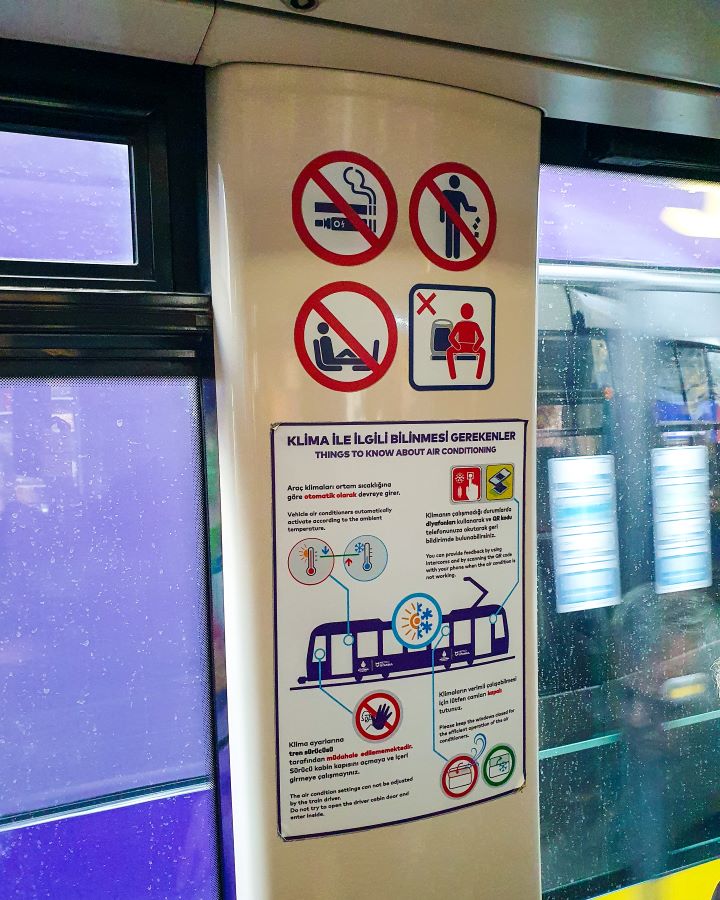
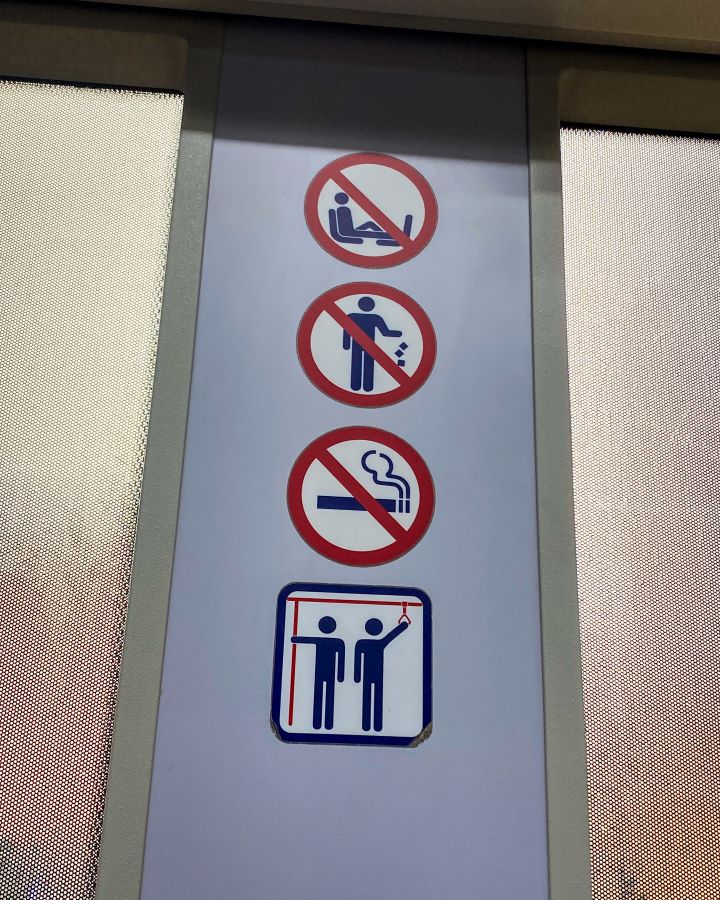
Bus
City buses run in most parts of Istanbul, with the exception of Sultanahmet. There are a few hundred bus routes all around the city, and most buses continue running until around midnight.
Interestingly, there are both public and privately run buses. However, they charge the same fares and you pay with the same method, so realistically there is little difference between them.
Airport Bus
We found that the best balance between cost and speed to get to and from the airport are the coach-style HVL or HVIST buses. These run between Istanbul airport and a few places around the city.
They definitely are not as cheap as the rest of the public transport in Istanbul (more details on the cost can be found below). But it’s much cheaper than a taxi or Uber, and much quicker than other public transport.
From the airport, you will find a stand in the arrivals hall where you can buy tickets. The staff here were able to let us know what route to take to our hotel. After purchasing our tickets, they directed us to the bus departure point.
From the Sultanahmet area, the easiest place to catch the bus to the airport is outside Aksaray Metro station. From here, you’ll want the HVL-1 route. Please be aware that these buses do fill up, and they only leave every half hour. We would definitely recommend arriving around 20-25 minutes before the bus leaves, but even this isn’t a guarantee that you’ll be able to get on. Make sure you leave yourself plenty of time to get to the airport in case you need to wait for the next bus.
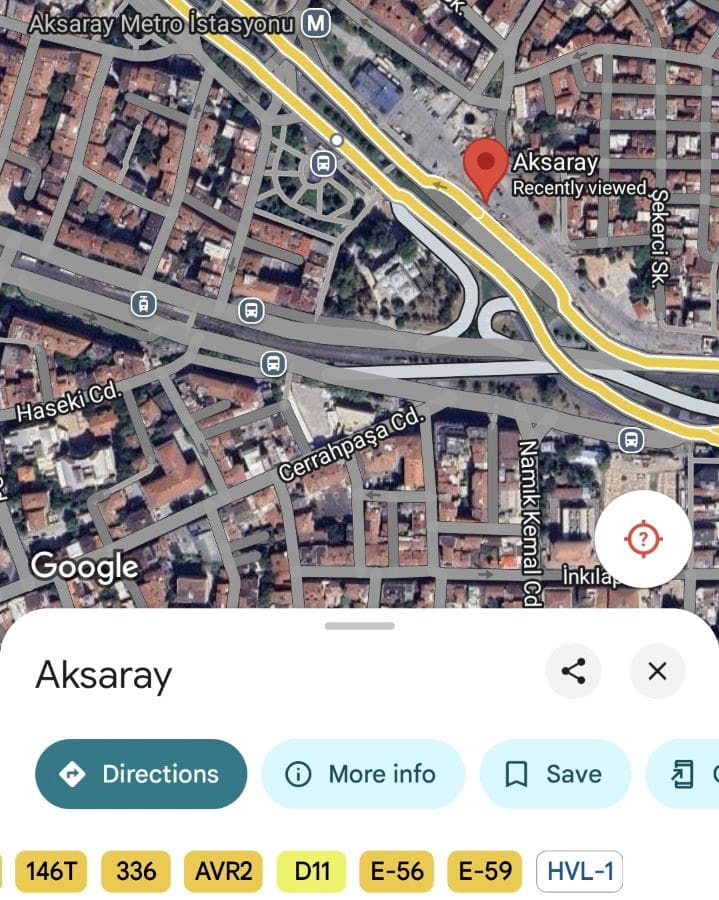
Ferry
Istanbul is situated on multiple bodies of water: the Sea of Marmara to the south, the Bosphorus Strait travelling north-south through the city, and the Golden Horn estuary travelling inland on the European side. Because of this, ferries are an integral part of the transport network. Istanbul ferries travel frequently from multiple ports around Istanbul. You can travel across the Bosphorus, across the Black sea to Ukraine, and across the Sea of Marmara to Bursa. In fact, the first bridge across the Bosphorus didn’t open until 1973. Before this, boats were the only way to get from the European side to the Asian side.
For tourists, the most useful ferry is the Kadıköy-Karaköy-Eminönü route. This travels in a loop between the three ports, with Kadıköy on the Asian side, and Karaköy and Eminönü on the north and south of the European side respectively. You can also catch a ferry from Eminönü to near the Dolmabahçe Palace, if you’d prefer that to the bus or tram.
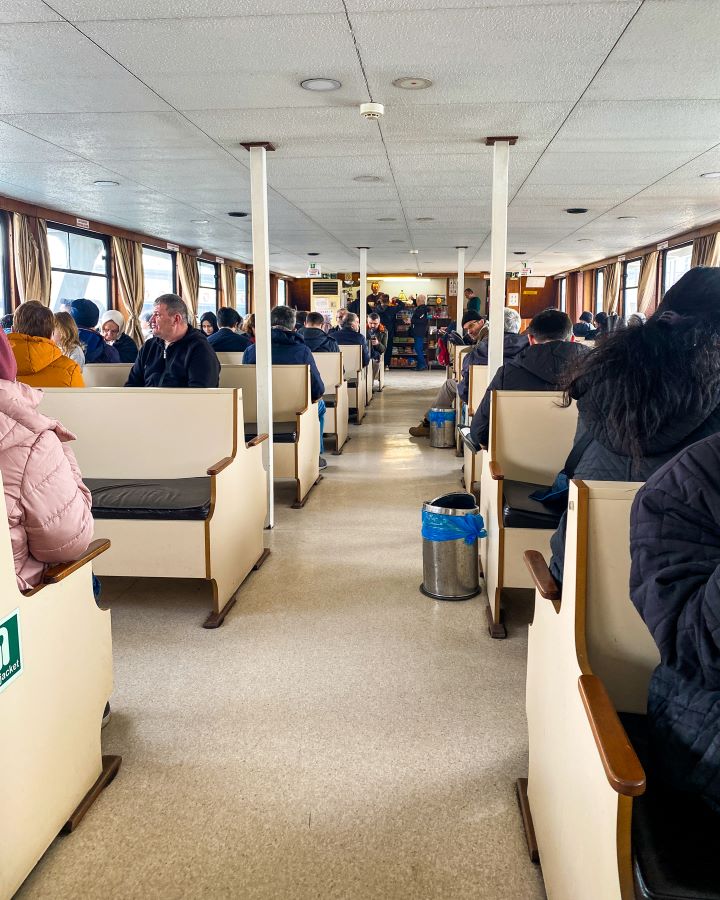
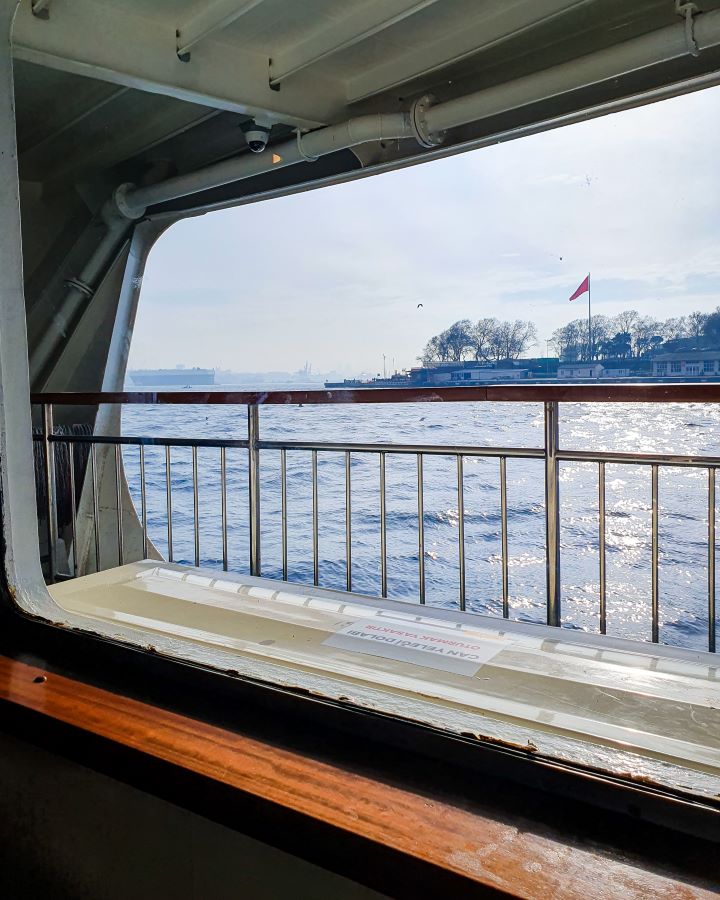
Funicular
Istanbul has three funiculars on the north part of the European side. Each of the funiculars runs from near the coast up to the higher areas of the city.
The F1 funicular line runs from Kabataş up to Taksim square. This could be useful if you’re heading to the Kabataş ferry port or to the Dolmabahçe Palace.
The F2 funicular is actually the oldest in the city, running underground between Karaköy and Beyoğlu. The F2 is also known as The Tünel. This funicular allows you to skip the steep incline up to İstiklal Avenue from Karaköy. If you’ve caught the ferry or walked across the bridge, this is definitely the easiest route up to the shopping area. However, we chose to walk up as we wanted to see Galata tower on the way, which you would skip over on the funicular.
The F4 runs between Aşiyan and Boğaziçi University, in an area much further north than the other two. This area isn’t super touristy, so most of you reading won’t need to catch this one.
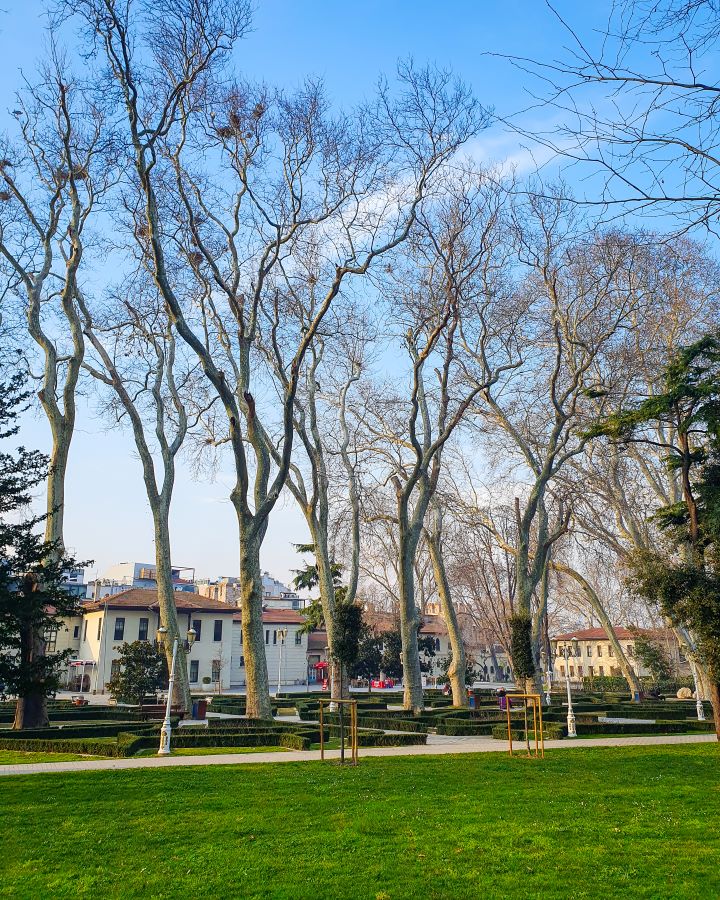
Paying the Fare
In Istanbul, especially as a tourist, you really only have one option for how to pay for your public transport. The only exception is for the HVL buses to and from the airport.
Istanbulkart
Like many cities around the world, you can pay for public transport in Istanbul using a prepaid card: the Istanbulkart. Istanbulkarts can be used for all modes of transport, including the HVL buses for the airport. As a tourist, the anonymous Istanbulkart will be your only option, as personal cards are only available for Turkish residents.
You can buy an anonymous Istanbulkart at all tram or metro stops around the city using the ticket machines. The card itself costs ₺130. You can load money on to the card, which is used to pay for transport. Some machines will only accept cash, but we didn’t have any trouble finding machines to buy our card or top it up using our credit card.
They are super easy to use as well! You simply tap the card on the card reader at the entrance to stations (for metro, tram, ferry or funicular) or on board the vehicle (for buses).
The best thing that we found for the Istanbulkart is that you can have more than one person using the same card. We only had to pay the ₺130 once, but we were both able to tap into stations with the same card.
However, there is one major downside to the Istanbulkart for tourists: there is an upload limit of ₺500 per calendar month on the anonymous card. We’ll go through the prices of transport shortly, but for two people travelling on a few different journeys each day, you’ll hit this limit very quickly. Even with only one person per card, you are likely to hit this limit in less than a week. If this happens, your only option to continue using the Istanbulkart is to buy a new one for ₺130.
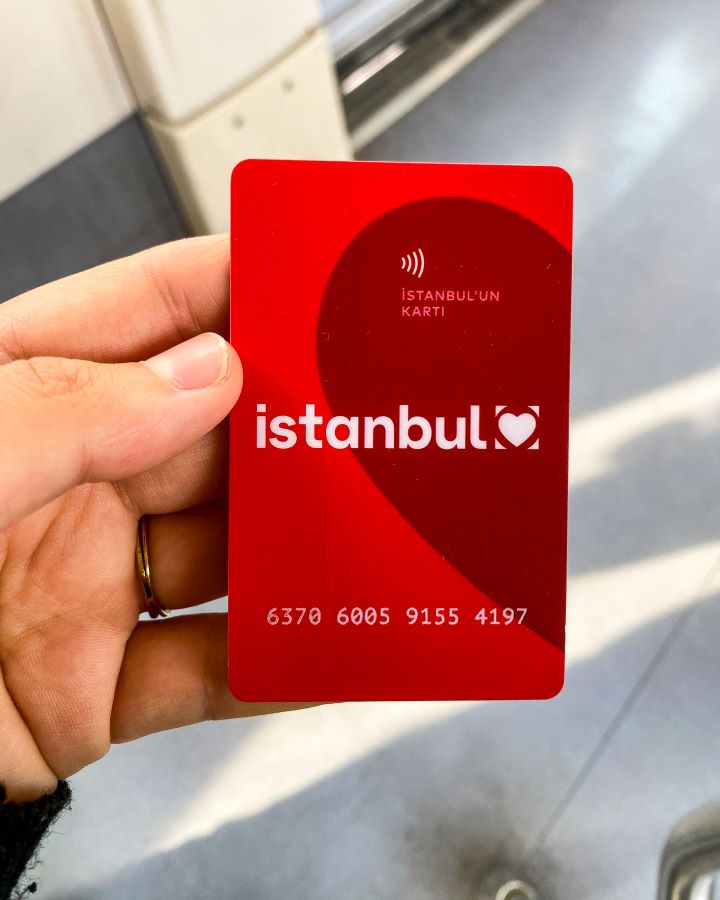
Istanbulkart App
You may see people online talking about downloading the Istanbulkart app. You can use the app to create a digital card from your physical card, and top up the balance there. Unfortunately, this app is region locked, so it’s only available to people with a Turkish app store or play store. Additionally, from our research, you also need a Turkish ID to create your account anyway. This means this isn’t really feasible for tourists.
Contactless
On some vehicles, you’re able to purchase your ticket with your bank-issued contactless card. We used this method to pay for our HVL buses to and from the IST airport, as these would use up a significant amount of the ₺500 Istanbulkart limit.
It is also possible that you may be able to use a contactless card to directly pay for transport by tapping your bank card instead of your Istanbulkart. We did not see anyone do this during our visit, but we have read about people using their cards in this way in the past. However, even if this payment method is still available, you will get charged more (excluding the HVL buses). For each journey, it costs 1.5x the amount to pay with contactless card instead of an Istanbulkart. This may be worthwhile if you won’t be taking much transport, but the ₺130 for the Istanbulkart will pay for itself quite quickly because you’re saving on the journeys.
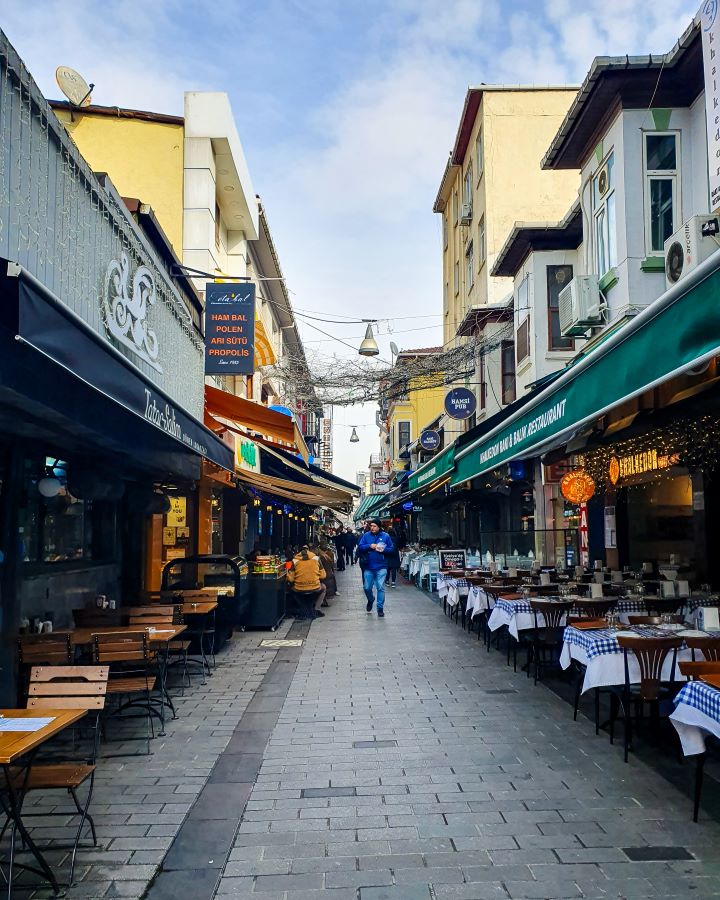
Can You Pay with Cash or Tokens?
Unfortunately, the answer to this is no. No public transport in Istanbul will accept cash as a payment method. If you have cash, you can only use this to purchase and top up an Istanbulkart.
Previously, there were tokens or ‘jetons’ that could be used to pay for transport in Istanbul. They were essentially single tickets for one journey each. However, from everything we’ve read and from what we saw around the city, these are no longer in use.
The easiest option really is to just get yourself an Istanbulkart and load it up with the money you’ll need during your visit. Even with the cost of the card itself, it is still relatively inexpensive for public transport, and it saves so much hassle!
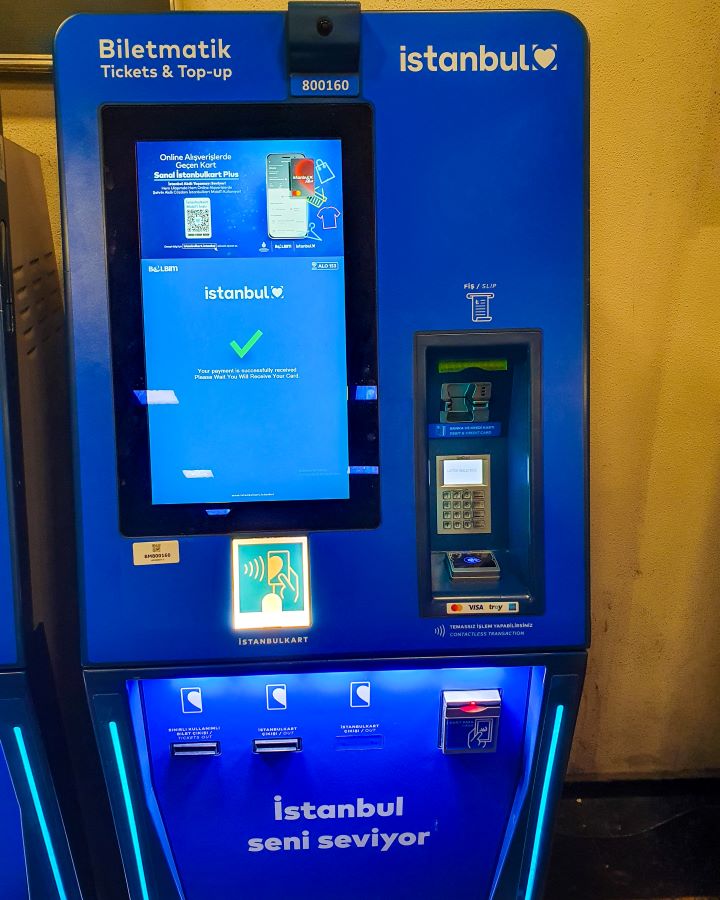
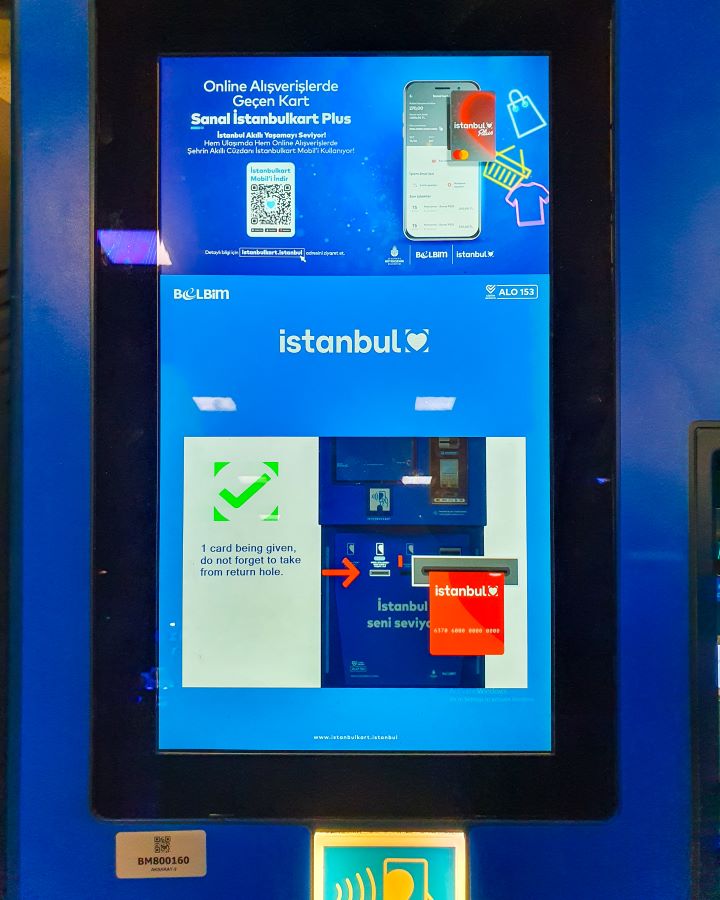
Cost of Public Transport in Istanbul
The cost of public transport in Istanbul is something that we really struggled to find accurate and up to date information on. We found all kinds of amounts listed online, but there is no official list of prices, and even the woman we spoke to at the tourist information centre didn’t know how much certain journeys cost. These prices are based on what we paid during January and February 2025, or the most up to date prices. If you visit Istanbul and find that any of these prices are inaccurate, please reach out to us!
Tram and Metro
Tram and metro journeys are both charged as a flat fare on the anonymous Istanbulkart. The metro and tram cost in Istanbul is ₺27 per journey (around $1.20 AUD or €0.70).
Buses
We didn’t catch any city buses during our time in Istanbul. Unfortunately this means we can’t give you the exact cost of them. From our research, a single bus journey could cost anywhere between ₺15 and ₺35.
Airport Buses
The airport bus cost will depend which route you are taking. If you’re heading from IST airport to Sultanahmet on the HVL-1 or to Taksim on the HVL-9, it will cost you ₺275. If you’re heading over to Kadıköy on the HVIST-14, it will cost ₺300.
Ferries
Ferries can cost different amounts depending on the route that you are wanting to take. For the ferry from Kadıköy to Eminönü or Karaköy, one journey cost us ₺38.11. They can change depending on the time of day and the ferry company that runs the particular boat you’re on. Most ferry trips will set you back anywhere from ₺29 to ₺45.
Funicular
Similar to the buses, we didn’t actually use a funicular during our time in the city. However, we have found that ₺17.70 seems to be the most up to date price for one journey on any of the funiculars.
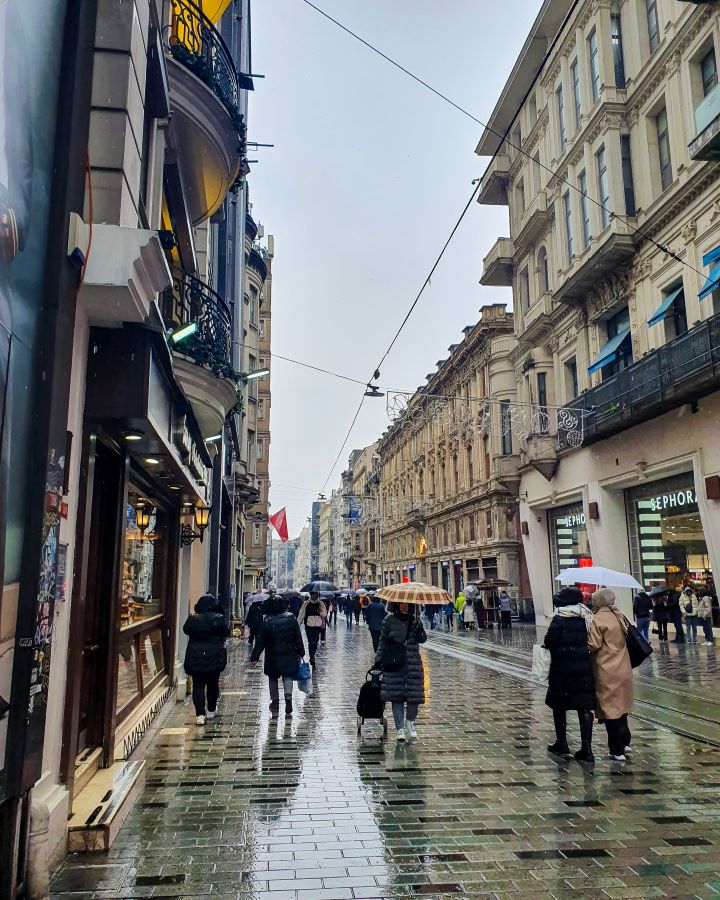
Finding Timetables and Routes
Like almost all the cities we have written public transport guides for, our number one recommendation for finding departure times and routes is Google Maps. All of the public transport in Istanbul is integrated into Google Maps, meaning you can simply enter your start and end points to get journey suggestions. You can also do the same with Citymapper, which is also integrated with the Istanbul public transport system. Both apps also give you a price estimate, which can be useful but isn’t always 100% accurate.
If you don’t have Google Maps or Citymapper, or you’re wanting some other options, the IETT website (Istanbul’s transport authority) also allows you to enter your start and end destination and will give you the route options for your journey.
For ferries, you can also check the ferry timetables if you’re wanting to pre-plan your trip. You can also see the Istanbul Metro map, which can help you plan your journeys on metro or tram.
Given that much of the information online about the public transport in Istanbul is out of date, we would recommend sticking to one of these options. This is the best way to get accurate information at the time you need it.
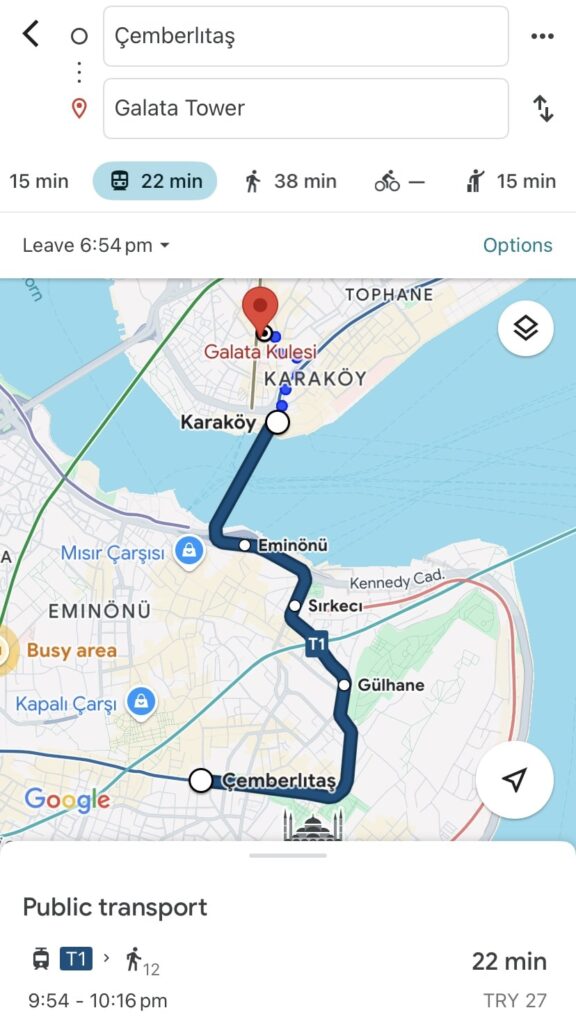
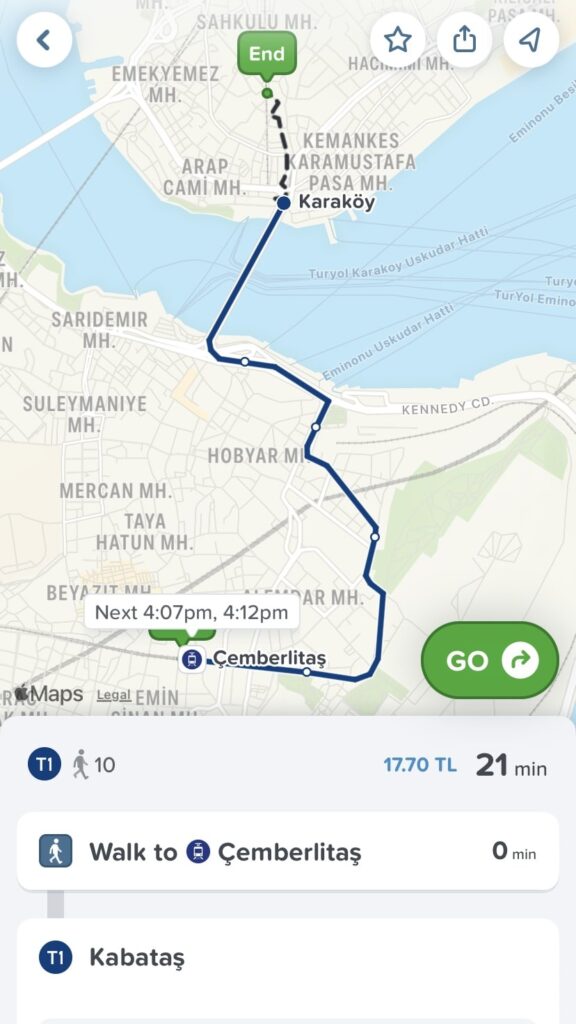
Important Things to Know
- Most tram stops have two platforms, one on either side of the road. Make sure you enter on the correct side for your direction of travel, as to swap sides you would need to cross the tram tracks. People definitely do this, but obviously for your own safety it’s best if you don’t.
- Like many cities across Europe, pickpockets aren’t uncommon in Istanbul. When you’re on public transport in Istanbul, make sure you keep your belongings close and stay aware of what is going on around you.
- If you’re using an Istanbulkart for more than one person, you’ll need to wait 5 to 10 seconds between tapping people in or the card won’t read properly.
- Fare prices for public transport in Istanbul seem to change quite frequently, as does the cost of the Istanbulkart. While we have done our best to keep these prices up to date, they may not be accurate at the time of your visit.
Final Thoughts
We know just how difficult it can be to find accurate and up to date information about the public transport system. On our trip, we spent so long trying to find out the tram cost in Istanbul, how to buy tickets and how much we needed on our Istanbulkart to get the ferry to Kadıköy. We hope that our experience using the public transport in Istanbul is helpful for you on your trip to this amazing city.
Please reach out to us with any questions, or if you have any additional information that you think could help other travellers to Istanbul. We always love hearing from you!
To see everything we did during our time in Istanbul, you can check out our vlog below:
Leave a Reply